Women are often more interested in abs and legs workouts, but training our upper bodies is important too. Apart from the fact that having upper body strength is useful in everyday life and often helps prevent back injury, toned shoulders, arms and chest look good.
Our shoulder muscles work in two ways. They perform lots of lifting, pushing and pulling actions and also stabilise our shoulder blades while other muscles are performing actions. The 3 exercises in this challenge work the shoulder muscles in different ways, for best results in improving strength and tone.
Before you start the toned shoulders challenge
You’ll need some hand weights for the exercises to be effective. 2lb or 4lb (1kg or 2kg) should be challenging enough for anyone who doesn’t do regular strength training. See a hand weight buying guide here.
Please make sure you’ve also read the safety information here.
Progressing on from the challenge
Once you’ve finished the challenge, you could try some of the other challenges suggested below, or the 4 week arm and chest workout. Alternatively, once you get to the 20 reps of everything at the end of the challenge, you could continue to do these reps 3 times a week and try to increase your weights every few weeks.
Toned shoulders challenge chart
These are the reps to do each day – exercise instructions are below the chart.
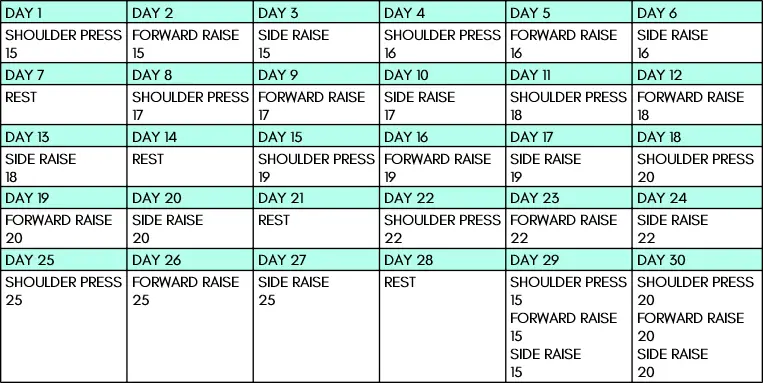
Warm up
Before you start, warm up your shoulders with 5 arm circles.
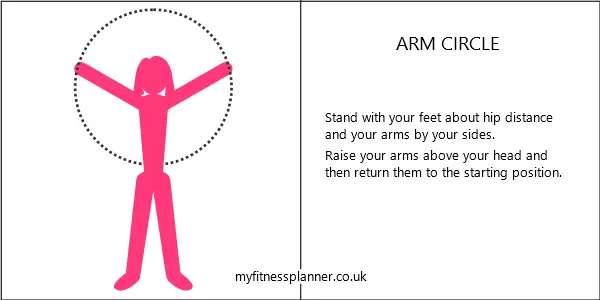
The exercises
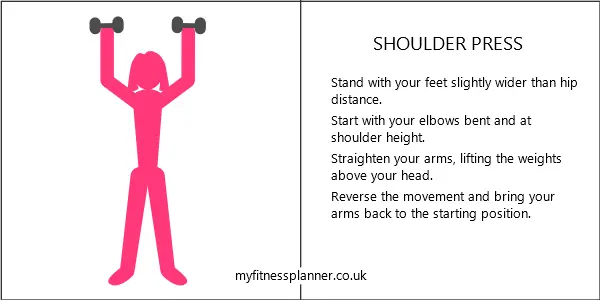
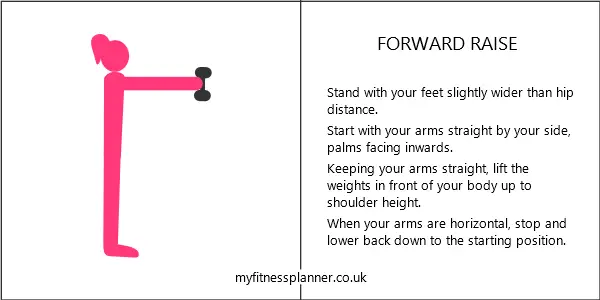
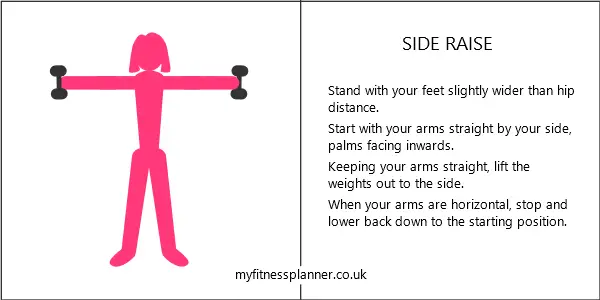
Shoulder muscles and stability
The shoulder muscles play an important role in upper body stability, providing the support and strength necessary for various activities. The shoulder muscle complex includes the deltoids, rotator cuff muscles (supraspinatus, infraspinatus, teres minor, and subscapularis), and other supporting muscles like the trapezius, pectoralis major, and latissimus dorsi.
The deltoids are the primary movers of the shoulder, responsible for lifting and rotating the arm. They work in conjunction with the rotator cuff muscles, which stabilize the shoulder joint by securing the head of the humerus within the shallow socket of the scapula. This stabilization is essential for preventing dislocations and ensuring smooth and controlled arm movements.
The rotator cuff muscles are vital for maintaining shoulder stability during dynamic activities. They help manage the balance between mobility and stability, allowing for a wide range of motion while keeping the shoulder joint secure. These muscles are particularly important in overhead activities and sports, where the shoulder is subjected to significant stress and strain.
Additionally, the trapezius and latissimus dorsi muscles contribute to upper body stability by supporting the shoulder blades and facilitating proper posture. They assist in movements like pulling and lifting, ensuring the shoulder girdle remains stable.
Related to toned shoulders challenge
Challenge FAQs
The first day of the challenge should feel like it needs a bit of effort, but not too much. If you really struggle with day 1, then you probably won’t get through the challenge. The idea with the challenges on this site is that the first few days get you used to the exercises and the daily habit. Usually about halfway through the challenge the effort levels start to increase more quickly.
Avoid challenges that increase effort levels very quickly – they’re simply not realistic. It’s unlikely that, for example, you would be able to increase how many squats you are able to do by 10 a day for 30 days, or increase your plank hold time by 10 seconds a day for 30 days.
In general, allowing muscles 48 hours between workouts is good because it gives our bodies time to recover and adapt. Challenges are generally short workouts and for a limited period of time (usually 30 days), so not having many rest days won’t be a problem. With challenges that alternate exercises each day, it’s not an issue, because you’re using different muscles.
Fitness improvements don’t always happen in a predictable way. Sometimes we’re just not as strong or energetic for no apparent reason, or we hit a plateau. If you get to a point where you’re struggling to complete the day’s challenge, you can try one of the following:
- Take a couple of days off and start again where you left off
- Do the challenge on alternate days rather than every day
- Instead of increasing the effort every day, stay at the same level for 2 or 3 days and then go onto the next day of the challenge
Obviously these solutions mean the challenge will last longer, but you’ll still benefit from doing it.

